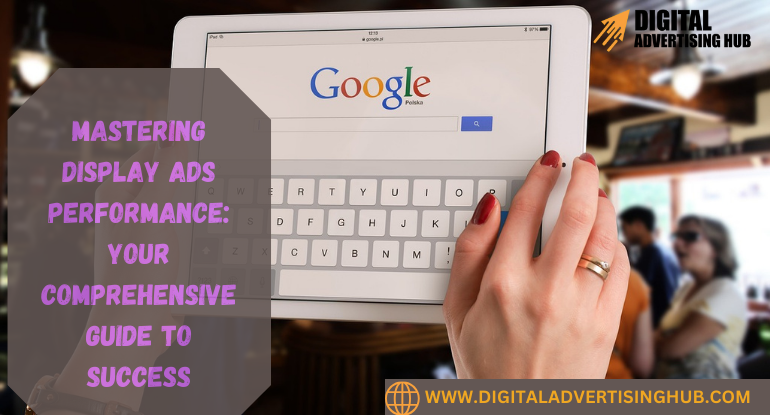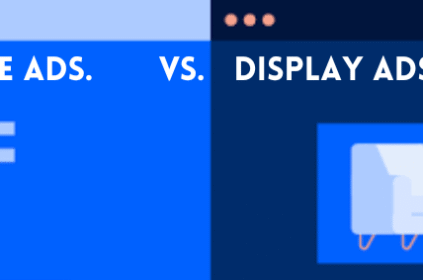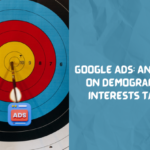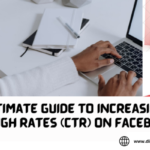Are you tired of pouring resources into display ads without seeing the impactful results you desire?
In today’s ever-changing digital landscape, display advertising remains a cornerstone for brands seeking to increase brand awareness, generate leads, and drive conversions.
From visually striking banners to engaging video ads, these versatile tools offer an effective means to connect with your target audience across the vast expanse of the internet.
However, navigating the complexities of display ads and optimizing their performance can often feel like traversing a labyrinth without a map.
This guide aims to provide you with a detailed roadmap to mastery, brimming with actionable strategies and practical tips to unlock the full potential of your display advertising campaigns. Here’s what you can expect to gain:
1. Understanding the Display Ads Landscape:
Delve into the diverse world of display ads, exploring various formats, ad networks, bidding models, and key performance metrics.
2. Crafting Targeted Campaigns:
Learn to develop detailed buyer personas, leverage data insights, and employ advanced targeting techniques to ensure your ads reach the right audience at the right time.
3. Creating Compelling Visuals and Copy:
Discover the art of crafting captivating visuals and persuasive ad copy that resonate with your audience, driving maximum engagement and conversions.
4. Optimizing Bidding and Budget Management:
Demystify bidding strategies, effectively manage your budgets, and employ data-driven tactics to maximize return on investment (ROI).
5. Measuring and Analyzing Campaign Performance:
Explore techniques for measuring campaign success, analyzing trends, and making informed decisions based on actionable insights.
By the conclusion of this insightful journey, you’ll wield the power of display ads with confidence, poised to conquer your marketing goals and outshine your competitors.
So, are you prepared to embark on this enlightening voyage toward display ad mastery?
Understanding the Display Ads Landscape: Your Toolkit for Success
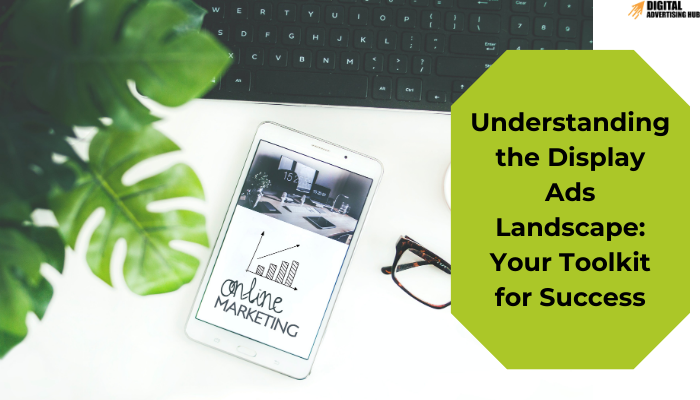
Imagine stepping into a bustling marketplace flooded with colorful banners, captivating videos, and interactive experiences. That’s the realm of display advertising, offering a myriad of formats and platforms to capture your audience’s attention. In this section, we’ll unpack the essential tools in your display ad arsenal:
#1. A Spectrum of Display Ad Formats:
– Banners: Versatile workhorses available in various sizes and styles, including static, animated, and expandable, to suit diverse ad placements.
– Video Ads: Engaging short videos ideal for storytelling, product showcasing, or evoking emotional responses.
– Native Ads: Seamlessly blend into their surroundings, providing a less intrusive and often more engaging user experience.
– Rich Media Ads: Interactive experiences like quizzes, polls, and games that add a playful element and potentially boost engagement.
– Outstream Ads: Short video ads appearing outside traditional video players, offering broader reach across the web.
#2. Navigating the Ad Network Labyrinth:
– Google Display Network (GDN): Reaches billions of websites and apps across the Google ecosystem.
– Facebook Audience Network: Leverages the extensive audience of Facebook and Instagram users.
– Programmatic Buying: Utilizes platforms to automate ad buying across various networks, optimizing placement and pricing.
– Direct Placements: Involves negotiating ad space directly with specific websites or publishers for targeted reach.
#3. Bidding Models: Understanding the Currency of Display Ads:
– Cost Per Mille (CPM): Pay for every 1,000 impressions your ad receives.
– Cost Per Click (CPC): Pay for each click that your ad generates.
– Cost Per Acquisition (CPA): Pay for each conversion (e.g., purchase, signup) driven by your ad.
– Target CPA: Set a desired cost for each conversion, and the bidding system automatically optimizes for it.
#4. Measuring Success: Key Metrics to Track:
– Impressions: The number of times your ad is displayed.
– Clicks: The number of times users click on your ad.
– Click-Through Rate (CTR): Clicks divided by impressions, indicating ad effectiveness.
– Conversions: The number of desired actions users take after clicking your ad.
– Conversion Rate: Conversions divided by clicks, measuring your campaign’s ability to drive results.
– Cost per Acquisition (CPA): The average cost you pay for each conversion.
– Return on Ad Spend (ROAS): Revenue generated from conversions divided by your ad spend.
By comprehensively understanding these formats, networks, bidding models, and key metrics, you’ll be well-equipped to navigate the display ad landscape and choose the right tools for your campaign goals.
In the next section, we’ll delve into the art of targeting, helping you identify and reach your ideal audience with precision.
Targeting Strategies for Success: Reaching Your Desired Audience

In the realm of display ads, precision is paramount. Crafting captivating ads is crucial, but reaching the right audience is what truly drives success. This section equips you with targeting strategies to hit the bullseye with your ideal audience:
#1. Building Buyer Personas: Knowing Your Perfect Customer:
– Establish detailed buyer personas encompassing demographics, interests, values, motivations, pain points, and needs.
– Utilize tools like customer surveys, social media insights, and website analytics to create a comprehensive picture of your target audience.
#2. Data & Insights: Your Targeting Superpower:
– Leverage data to identify relevant keywords, analyze browsing behavior, explore demographics and interests, and utilize lookalike audiences.
– Utilize research platforms and audience insights tools to gain deeper insights into your target audience.
#3. Advanced Targeting Tactics for Enhanced Precision:
– Explore contextual targeting, retargeting, custom audiences, and audience segmentation to refine your targeting approach.
– Embrace advanced options to tailor your ads for maximum relevance and impact.
#4. A/B Testing & Data-Driven Optimization:
– Conduct A/B tests to compare targeting parameters and refine your strategies based on performance.
– Regularly analyze data to identify trends and areas for improvement.
– Adapt personas and targeting strategies based on new insights and evolving audience behavior.
Effective targeting is an ongoing process. By combining buyer personas, data insights, and strategic testing, you can ensure your ads reach the right people at the right time, maximizing your campaign impact.
In the next section, we’ll dive into the creative realm, learning how to craft captivating ad experiences that resonate and convert.
Creative Optimization for Conversions: Captivating Your Audience with Every Display Ad
Now that you’ve identified your ideal audience, it’s time to craft compelling ad experiences that grab attention, spark engagement, and ultimately drive conversions. This section delves into the art of creative optimization:
#1. Visual Storytelling: The Power of Eye-Catching Ads:
– Invest in high-quality visuals that align with your brand identity, appeal to your target audience, evoke emotion, and tell a story.
#2. The Art of Compelling Copy: Speaking Your Audience’s Language:
– Craft clear, concise, and benefit-driven copy that highlights your unique value proposition, speaks directly to your audience’s needs, uses strong calls to action, and avoids jargon.
– Test different headlines and copy variations to optimize performance.
#3. Personalization Power: Tailoring Ads for Individual Impact:
– Utilize dynamic creative optimization, retargeting with personalized messaging, and audience segmentation to deliver personalized ad experiences.
– Enhance engagement and conversion rates through personalized ads.
#4. Landing Page Optimization: The Final Conversion Hurdle:
– Maintain consistency with your ad, offer a clear value proposition, make the call to action prominent, and optimize for mobile devices.
– Ensure a seamless user experience to maximize conversions.
By mastering these creative optimization techniques, you’ll transform your display ads into captivating experiences that resonate with your audience, driving them towards the desired action and propelling your marketing efforts to new heights.
Let us delve into the strategic world of bidding and budget management, ensuring you extract maximum value from your advertising spend.
Bidding Strategies & Budget Management: Balancing Performance and Return on Ad Spend
Now that you’ve crafted captivating ads and targeted the right audience, it’s time to delve into the world of bidding and budget management. These elements play a crucial role in determining the performance and cost-effectiveness of your display ads campaigns. Let’s explore the strategies to unlock optimal ROI:
#1. Demystifying Bidding Models:
Bidding models define how much you’re willing to pay for ad placements and user actions. Understand these key options:
- Cost Per Mille (CPM): Pay for every 1,000 impressions your ad receives, suitable for brand awareness campaigns.
- Cost Per Click (CPC): Pay for each click that your ad generates, ideal for driving website traffic.
- Cost Per Acquisition (CPA): Pay for each conversion (e.g., purchase, signup) driven by your ad, excellent for maximizing ROI.
- Target CPA: Set a desired cost for each conversion and the bidding system automatically optimizes for it.
- Choosing the right model depends on your campaign goals and budget constraints
#2. Setting Realistic Budgets and Allocation:
– Define clear budgets for each campaign based on overall marketing goals and available resources.
– Experiment with different ad groups and targeting options, start with lower bids, and optimize budget allocation based on data insights.
#3. Leveraging Automated Bidding Features:
– Utilize automated bidding options like “Maximize Clicks” or “Target CPA” to optimize bids based on goals and historical data.
– Set clear bidding limits to ensure automation stays within budget constraints.
#4. Controlling Campaign Costs and Maximizing ROI:
– Exclude irrelevant placements, adjust bids based on time of day and device, monitor performance continuously, and utilize negative keywords to control costs and maximize ROI.
By mastering these bidding and budget management strategies, you’ll gain control over your campaign costs, ensure efficient resource allocation, and drive your ROI to new heights.
In the next section, we’ll consider the importance of measurement and reporting, enabling you to track progress, analyze data, and make informed decisions for continuous campaign optimization.
Measurement and Reporting: Unveiling the Secrets to Success
In the fast-paced realm of online advertising, data reigns supreme. By effectively measuring and analyzing your campaign performance, you gain invaluable insights to fine-tune your strategies, optimize for results, and ensure your display ads deliver tangible value. Let’s delve into the essential tools and practices for data-driven decision-making:
#1. Defining Campaign Goals & Defining Relevant Metrics:
Before diving into data, clearly define your campaign goals: brand awareness, website traffic, lead generation, or direct sales. Align your metrics with these goals to track what truly matters:
- Brand awareness: Monitor impressions, reach, and engagement metrics like social shares and click-through rates (CTRs).
- Website traffic: Track website visits, unique visitors, and page views generated by your campaigns.
- Lead generation: Analyze lead form submissions, cost per lead (CPL), and conversion rates on landing pages.
- Direct sales: Track the number of purchases attributed to your display ads, cost per acquisition (CPA), and return on ad spend (ROAS).
Remember, vanity metrics like impressions might look impressive, but focusing on metrics directly tied to your goals provides actionable insights.
#2. Demystifying the Data Jungle: Key Display Advertising Metrics:
Now, let’s explore the fundamental metrics you’ll encounter in your reporting dashboards:
- Impressions: The number of times your ad is displayed.
- Clicks: The number of times users click on your ad.
- Click-through rate (CTR): Clicks divided by impressions, indicating ad effectiveness.
- Cost per click (CPC): The average cost you pay for each ad click.
- Conversions: The number of users who take desired actions (e.g., purchases, signups) after clicking your ad.
- Conversion rate: Conversions divided by clicks, measuring your campaign’s ability to drive desired actions.
- Cost per acquisition (CPA): The average cost you pay for each conversion.
- Return on ad spend (ROAS): Revenue generated from conversions divided by your ad spend.
Remember, analyze these metrics within the context of your campaign goals and historical data to identify trends and areas for improvement.
#3. Reporting Best Practices: Turning Data into Actionable Insights:
Leverage the power of analytics platforms like Google Ads, Facebook Ads, and website analytics tools to track your campaign performance in detail. These platforms offer insightful reports, allowing you to drill down into specific demographics, device types, and user behavior.
Pro tip: Schedule regular reporting cycles (e.g., weekly, monthly) to stay on top of your campaign performance and identify areas for optimization promptly.
#4. Asking the Right Questions: Transforming Data into Growth:
Don’t let data simply sit there! Analyze your reports, identify trends, and ask questions:
- Which ad formats resonate best with your audience?
- Are certain demographics driving more conversions?
- What landing pages convert at higher rates?
- Where are budget leaks occurring?
Use these insights to refine your targeting, optimize your creatives, and adjust your bidding strategies for continuous improvement.
By harnessing the power of measurement and reporting, you unlock the secrets of campaign success, ensuring your display advertising efforts deliver tangible results and propel your business forward.
Conclusion
Congratulations on completing this comprehensive guide to mastering display advertising! Armed with the knowledge and strategies outlined in this guide, you’re well-equipped to navigate the complexities of display advertising, optimize campaign performance, and drive tangible results for your business.
As you embark on your display advertising journey, remember that success requires continuous learning, experimentation, and refinement. Stay curious, remain adaptable, and be proactive in seeking out new opportunities to enhance your campaigns.
With dedication and perseverance, you have the potential to transform your display advertising efforts into powerful engines of growth, propelling your business to new heights of success.
So, what are you waiting for? Embrace the challenges, seize the opportunities, and embark on your journey to display advertising mastery today!

